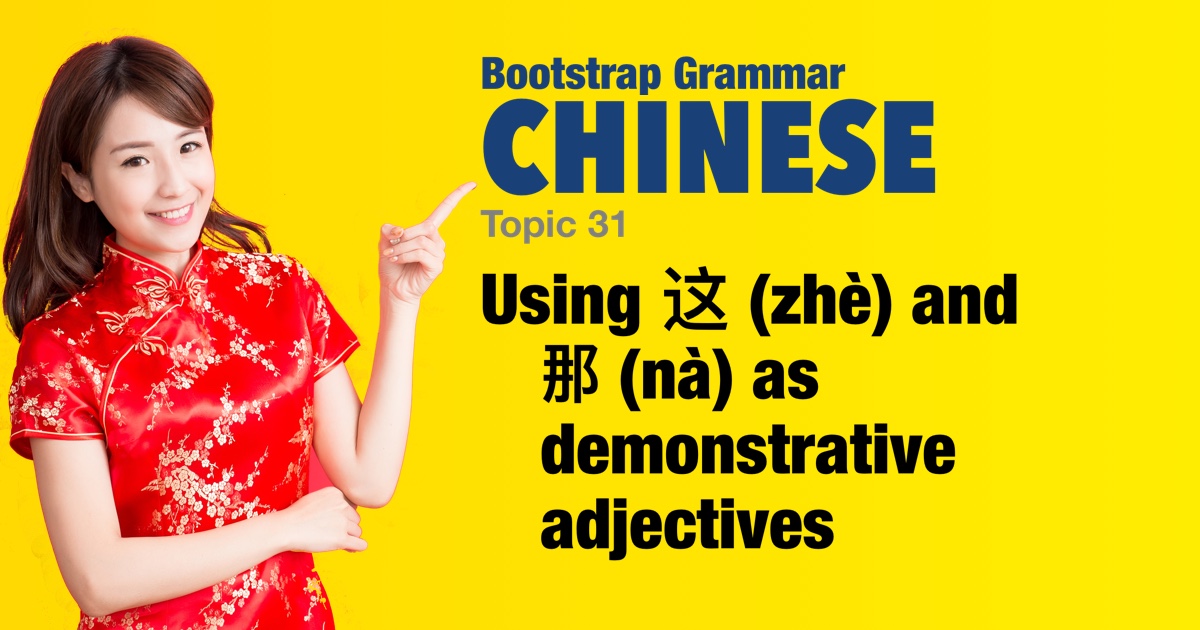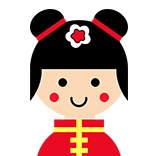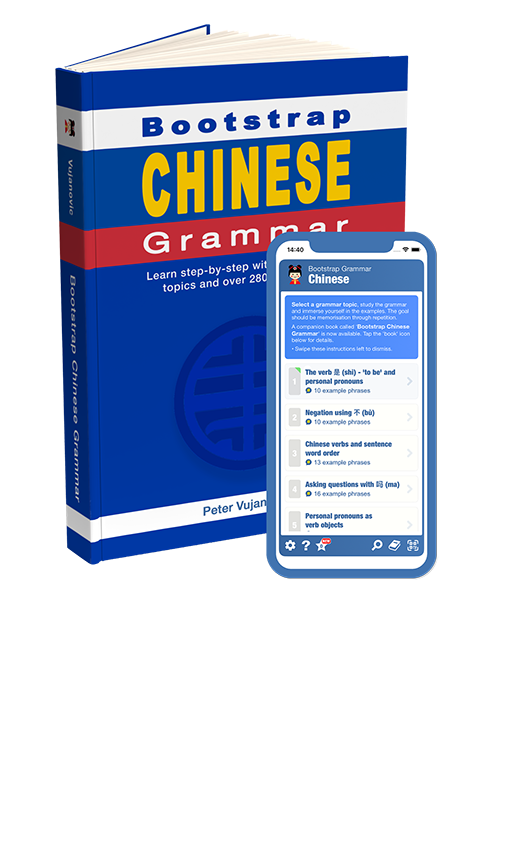Chinese grammar - Using 这 (zhè) and 那 (nà) as demonstrative adjectives |
|||
|
|||
In Chinese, in addition to being used as pronouns (as in 'This is good'), 这 (zhè) and 那 (nà) can be used as adjectives ('This rice is good'). — That is, they can be used to distinguish between explicit objects or ideas that are close or far from the speaker ('This rice is good, that rice is bad'). Given that Chinese does not have articles like 'a' and 'the', the adjective function of 这 and 那 can be used to specify the definiteness or indefiniteness of a noun. — Additionally, they can be used like articles to reference things referred to previously. When used in this way (and when referring to countable objects), 这 and 那 should always be accompanied by the appropriate counter or measure word before the noun. |
| Examples: | |
|
那棵树很大。
nà kē shù hěn dà. That tree is big.
|
|
|
这棵树很小。
zhè kē shù hěn xiǎo. This tree is small. |
|
|
这个问题很难。
zhè ge wèntí hěn nán. This question is difficult.
|
|
|
那个问题很容易。
nà ge wèntí hěn róngyì. That question is easy.
|
|
|
那只狗很年轻。
nà zhī gǒu hěn niánqīng. That dog is young. |
|
|
这只猫很老。
zhè zhī māo hén lǎo. This cat is old. |
|
|
这本书很贵吗?
zhè běn shū hěn guì ma? Is this book expensive? |
|
|
那本书很便宜吗?
nà běn shū hěn piányi ma? Is that book cheap? |
|
|
那个男人很老吗?
nà ge nánrén hén lǎo ma? Is that man old? |
|
|
那个老师很年轻吗?
nà ge lǎoshī hěn niánqīng ma? Is that teacher young? |
|
|
那个包不大吗?
nà gè bāo bú dà ma? Is that bag not big? |
|
|
那个包里有笔吗?
nà ge bāo lǐ yǒu bǐ ma? Is there a pen in that bag? |
|
|
那只猫有长尾巴吗?
nà zhī māo yǒu cháng wěiba ma? Does that cat have a long tail?
|
|
|
那个女人有短头发吗?
nà ge nǚrén yǒu duǎn tóufa ma? Does that woman have short hair?
|
|
 |
|




